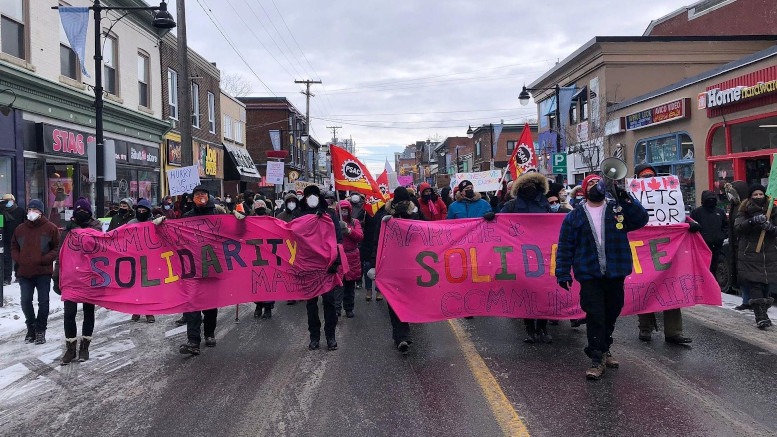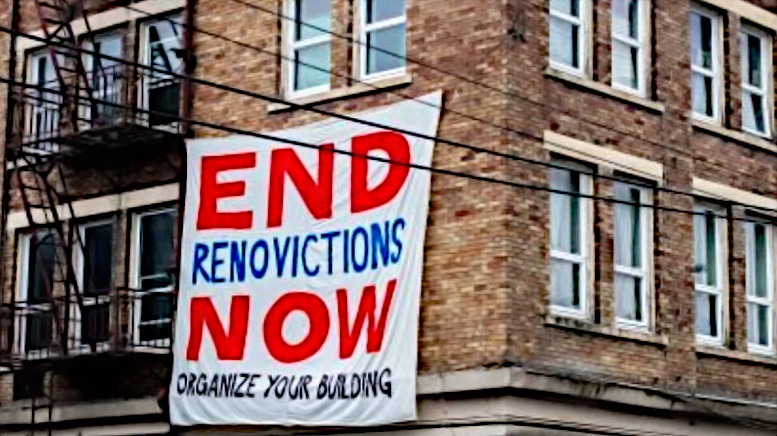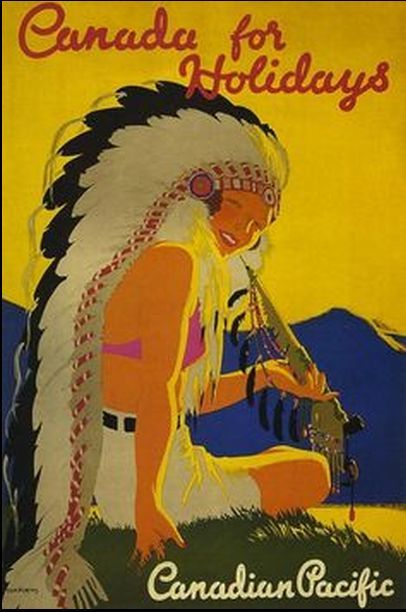Prime Minister Justin Trudeau has invoked the Emergencies Act in response to the ongoing anti-vaccine-mandate “convoy” protests in Ottawa and elsewhere. Socialist Alternative opposes the right-wing convoy protests and also condemns Trudeau’s over-reaching move to impose this anti-democratic Act, which is being implemented for the first time since its passage in 1988. The effects of this action will redound to a far greater degree against left-wing, Indigenous, and workers’ movements in the future than it will against the current protests.
What is the Emergencies Act?
The Emergencies Act is the successor to the War Measures Act, which most Canadians will know best as the means by which the current prime minister’s father, Pierre, put federal troops and tanks onto the streets in Montreal and Ottawa during the October Crisis of 1970, the final time the War Measures Act was used. Its use led to many attacks on democratic right across Canada.
The Act allows the Federal Government to declare a “national emergency” in the case of “an urgent and critical situation of a temporary nature that:
“(a) seriously endangers the lives, health or safety of Canadians and is of such proportions or nature as to exceed the capacity or authority of a province to deal with it, or
“(b) seriously threatens the ability of the Government of Canada to preserve the sovereignty, security and territorial integrity of Canada
“and that cannot be effectively dealt with under any other law of Canada.”
Trudeau has invoked the Act’s “Public Order Emergency” provision.
Serious concerns have been raised about whether the current situation merits such a drastic move. While the three-week intrusion in Ottawa and border blockades are extremely disruptive, are they seriously endangering lives, health and safety? This is debatable. Tommy Douglas, leader of the New Democratic Party during the October Crisis, called the government’s imposition of the War Measures Act at that time “using a sledgehammer to crack a peanut.” In 2022, the federal government has moved from an almost-casual approach to the blockades three weeks ago to now using the most forceful and far-reaching tool it has.
A serious concern is the restriction on civil liberties, including the right to protest. Compared to the War Measures Act, the Emergencies Act has significant restrictions on the curtailment of civil liberties, as it is subject to the protections of the Canadian Charter of Rights and Freedoms. However, the Act does allow restrictions on the right to assembly and freedom of movement in some situations. Curtailing even these restrictions has serious implications for the right to protest and may well be used in future against the left.
The Act prescribes punishment of up to six months’ imprisonment on summary conviction, or five years on an indictment, for breach of whatever measures the state introduces under the Act. These might be used against a handful of convoy organizers but will not hurt the growth of the far-right as a whole and will give them more, not less, overall sympathy from the public.
Trudeau and finance minister Chrystia Freeland stated that they will also use the Act to block donations to the convoy organizers, to freeze the company bank accounts and suspend the insurance of truck owners who are participating in protests, and to force towing companies to move rigs and other machinery out of proscribed areas, which companies had previously declined to do in Ottawa.
Business pressure prompts move
Of interest is the timing of the Act’s imposition. In the past week, a protest site blocking all traffic was set up on the Canadian side of the Ambassador Bridge linking Windsor, Ontario with Detroit, Michigan. This is the single biggest economic link Canada has with the United States, seeing a full 27 percent of the two countries’ trade in goods pass over it every day. A shutdown of only a few days resulted in lost shifts for Ontario automotive workers because of a lack of parts as well as the closure of an engine plant in Windsor and risks further worker layoffs. Business associations have said that manufacturers risk losing $50m a day. The squeezing by protestors of economic arteries, especially border crossings and resultant pressure from business groups and the US government, is what has provoked the government’s harder line — not a concern for the well-being of the harried residents of Ottawa, or solidarity with workers losing pay, or a desire to “stand up to hate.”
Ontario introduced a state of emergency a few days earlier and Trudeau was fully aware that most Canadians saw him as vacillating over the Ottawa encampment. He had to be seen to be acting. Trudeau did not want the left-wing and community resistance in Ottawa to the convoy to grow into anything larger.
The War Measures Act
The left must always be wary of increased governmental powers of suppression, even if the left is not the stated target. A lesser-known fact about the October Crisis, brought about by the culmination of kidnappings and bombings by the Front de libération du Québec (FLQ) in the 1960s, is that the War Measures Act was not just used against the tiny FLQ terrorist group (which numbered about 30 members), but that it sought to weaken militant workers’ organizations, Québec independence groups, and other opposition people and organizations. In all, 497 arrests were made, with left-wing union and student leaders targeted in particular. That is unlikely in the current crisis, but imposition of the Act now will make such cases much more likely in the future.
The Act was also in effect during the First and Second World Wars and was most infamously used to imprison and rob Japanese Canadians en masse during the latter. Their property confiscated under the Act, including homes and fishing boats, was not returned after the war. Their rights to move freely and to vote were not restored until 1949 and did not receive an apology and compensation from the federal government until 1988.
The War Measures Act’s implementations included the deployment of the military on Canadian territory. Trudeau has said that will not happen now and doing so would be accomplished through the National Defence Act. However, if this limited “test case” meets with unfettered success, a future government — perhaps a Conservative one with Pierre Poilievre at the helm — would feel much freer to direct the police or even the military in a more aggressive and violent way.
Failures of the NDP
Part of what has led to this point is that Jagmeet Singh and the NDP have completely abdicated leadership on the convoy issue. Since the convoy protests began, Singh’s foremost demand has essentially been “Justin Trudeau must do something about this.” The Emergencies Act is turning out to be that something. Another of their “demands” has been merely that different levels of government should get together to work out a solution. This is form without any substance — Singh does not say what those assembled levels of government should actually do — although Trudeau did speak with premiers before his announcement, as he is mandated to do before implementing the Act. Finally, they want the convoy’s funding to be investigated, and for a ban on “hate symbols.” These methods too could be used against the left much more energetically in the future — union strike funds or Indigenous solidarity donations could be confiscated with almost the exact same language and tactics as has been used. An official ban on swastikas or Confederate battle flags would not impact the convoys’ efficacy in the slightest, and Palestinian or USSR flags could just as easily (even if disingenuously) be tarred as “hate symbols” in order to delegitimize or criminalize future protests.
Tommy Douglas, beloved by most on the Canadian left and by Canadians as a whole, endured harsh public condemnation when he spoke against the elder Trudeau’s invocation of the War Measures Act. But his opposition to that act’s vastly increased government powers was both on principle and over the lack of democratic process. He told CBC Radio at the time, “if the government hasn’t got the necessary police powers to deal with the situation, then the proper approach is to come to Parliament and ask for additional powers,” as opposed to having the decision made exclusively by the prime minister and cabinet.
A party of organized labour in Canada, as the NDP is supposed to be, could have called for workers and left organizations, led especially by the unions, to repulse the right-wing convoys, preventing them from establishing themselves in the first place. As it stands, the NDP has stated that it will instead vote for the approval of the Act when it is brought to Parliament for review, as must be done within seven days.
The state can’t be trusted to fight the right
Socialists under capitalism fight against governmental rollbacks of civil and political rights. This is not just because of some abstract love for free speech or because of any affinity for the political views of those in the convoy protests, where we have seen far-right slogans and symbols and where vulnerable populations (people of colour especially) have been subjected to attempts at intimidation and abuse. It is because the establishment of precedence for state crackdowns on protest will be far more harmful for the working class in the long run than the removal by police or the military of a right-wing protest would be beneficial.
The right-wing elements, who are at the heart of these protests, are the same as those who tried to help police break up the Wet’suwet’en solidarity blockades on rail lines across the country in February 2020. They will realign with the police in a heartbeat in the case of a future protest of that kind, and they will be eager to inflict revenge for a breaking-up of the convoy protests — of course, they will not direct this revenge against the police or state, but against Indigenous land defenders or striking workers.
The organization of unions and residents of Ottawa to successfully block reinforcements to the occupation in that city on February 12 show how a broader movement led by unions and working-class organizations could have prevented these encampments. The Public Services Association of Canada (PSAC), a union representing government workers of which there are many in the federal capital, two Saturdays ago discouraged a counter protest. However, just a week later, they were found at the head of over 2,000 people, who blocked roads to prevent further rigs from accessing the city centre. The Teamsters, for instance, have tweeted condemnation of the convoys — but if they had mobilized their members to action, they could have provided a positive expression for working-class frustration instead of ceding the street to right-wing groups.
Trudeau and company have treated the protests with extreme gentleness before they imposed the Emergencies Act. This has not accomplished the goal of winding them down, but has instead imbued them with confidence, even arrogance. The remedy for this is not a sudden U-turn by the government and the unleashing of state forces that will, for the first time, lend legitimacy to the right-wingers’ cries of persecution. The way forward is through greater organization of the working-class majority of the country, the large majority of truckers included. Militant unions should organize a larger and wider working-class movement with demands that reflect the needs of working-class truckers and health workers, alongside a call to revoke the Emergencies Act. The fact that the convoys and border blockades have pushed the government to invoke the Emergencies Act shows the power that the organized working class could have if they were to rally around militant demands. The labour movement should be building this kind of workers’ power in order to win its demands and fight for what working-class people need to get through this pandemic.



